Items
Tag is exactly
community
-
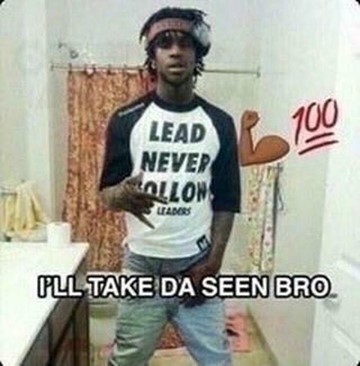 2023-12-14
2023-12-14Aaron Danner Professor Clarke Comp II 13 Dec. 2023 COVID-19 Archive Entries
During COVID, I unearthed some pre-existing online culture in certain spaces, like the larger Black online communities. With the pandemic especially disproportionately affecting communities of color, sometimes it could be fun to send photos back and forth, especially when there was nothing better to do. These entries into "A Journal of the Plague Year: The COVID-19 Archive" somewhat reflect my background (black, chronically online, good music enjoyer). Through careful consideration, the images above contribute to the COVID-19 Archive by centering on the Black online experience during the period. Entry 1: Photo - "I’ll take the seen bro" This photo, posted sometime in 2022, directly references group chat culture and highlights the isolation that such online social hubs sort of erased, to some degree, which provided an outlet from which experience further caused damaging effects. In the span of the 36-odd months between the start of covid 2020 and this time Fall of 2023, many things surrounding sociability changed. This entry envisions the underlying happy-sadness within the digital spaces at the time. We were thankful to have someone to share these posts with even if we couldn’t see them in real life. By the presumed “end” of COVID, many become “chronically online”, or at the least, the youth became even more enthralled with social media communities than before. Saying “I’ll take the seen” demonstrates a joking willingness to sacrifice one’s online profile (an exaggerated act) concerning group chat message viewing and response. Entry 2: Photo - Sosa in the Ukraine” Also from around 2022 (speculatively), entry #2 involves an enlarged edit of Chief Keef along over a cityscape with the caption “On the way to Ukraine 🚶💥🔫🏃♂️.” This edited image of Chief Keef (@chiefkeefsosa on Instagram) reflects on the early stages and meme culture of the COVID-19 period Ukraine conflict. The transcendent Chicago star posted this image as the conflict overseas began to heat up. During this time, the underlying danger of the war as well as the widespread long-term effects of the pandemic were still fresh on the internet. The post’s lighthearted attitude was quickly absorbed by the rest of the internet, where the image continued to circulate. Surely, future researchers will unearth photos like these in amazement at how simple memes assisted so many in pain during isolated periods. They helped maintain comedic and cultural connections despite physical distancing measures. Circulation and archival of images from the Black community, from the pandemic period, will provide a more complete record for the future.. The selected items offer a window into the complexities of the Black experience during the pandemic, shedding light on both the challenges faced and the enduring spirit of resilience and resistance that defines the Black community. Through these submissions, I invite a more comedic perspective of the socio-cultural impact of the pandemic, ensuring that this part of the COVID narrative won't be forgotten. -
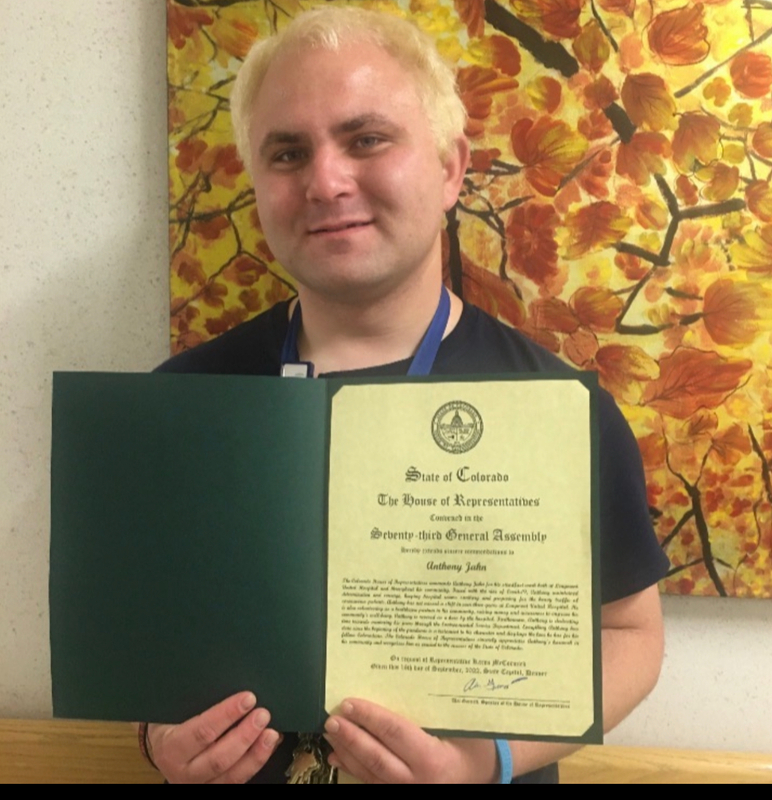 2022-09-22
2022-09-22Anthony
Explains about the warzone in the emergency department doing good during those times to bring people together in the community and a hero being honored by the state of colorado for all his work .This was submit to the house of representatives and this story has been shared in schools such as fredrick highschool by students who look up to him thank you -
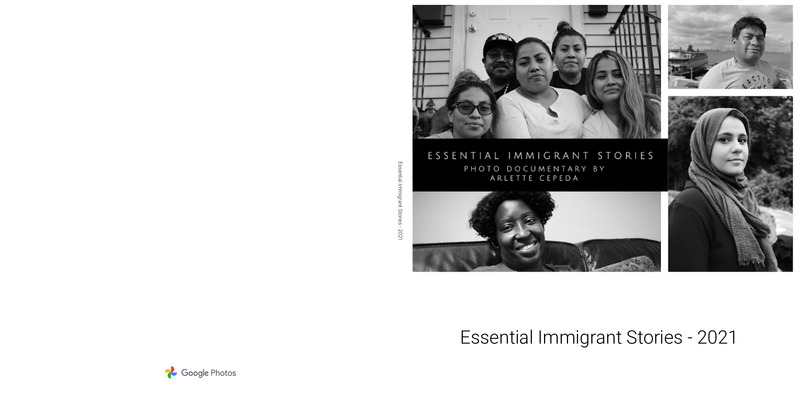 2021-09-11
2021-09-11Essential Immigrant Stories - Photo Book 2021
Essential Immigrant Stories is a photo-documentary project by visual artist and photographer, Arlette Cepeda, that focuses on highlighting the challenges and opportunities the COVID-19 pandemic has created for Staten Island’s immigrant community members through portraits and accompanying stories. The goal of this project is to elevate and validate the immigrant experience and their impact in our Staten Island community. “Through portraits and accompanying short stories, I'm interested in documenting the experiences of the often neglected, silenced or omitted immigrant population of this particular north-shore neighborhood.” “It is my hope that this project can help create awareness, increase empathy, acceptance and understanding of our otherness, narrowing the divide and discrimination often faced by immigrants.” - Arlette Cepeda -
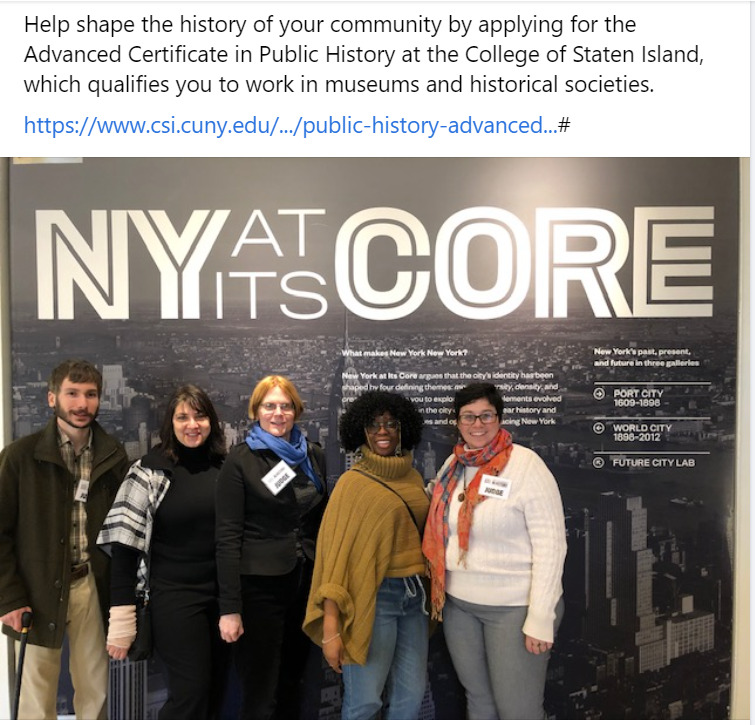 2020-06-17
2020-06-17NY at its Core
Help shape the history of your community by applying for the Advanced Certificate in Public History at the College of Staten Island, which qualifies you to work in museums and historical societies. -
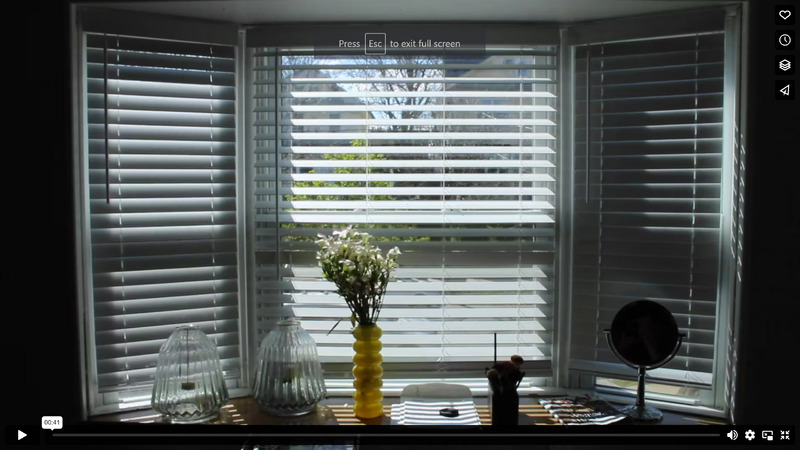 April 2020
April 2020Cin 211
the daily life of Matthew Torres during the height of the pandemic -
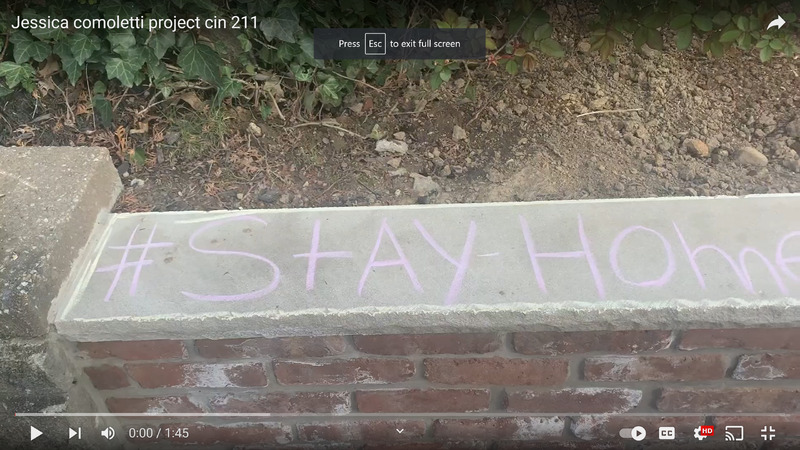 April 5, 2020
April 5, 2020Jessica comoletti project cin 211
a video of an empty/near empty park during the pandemic -
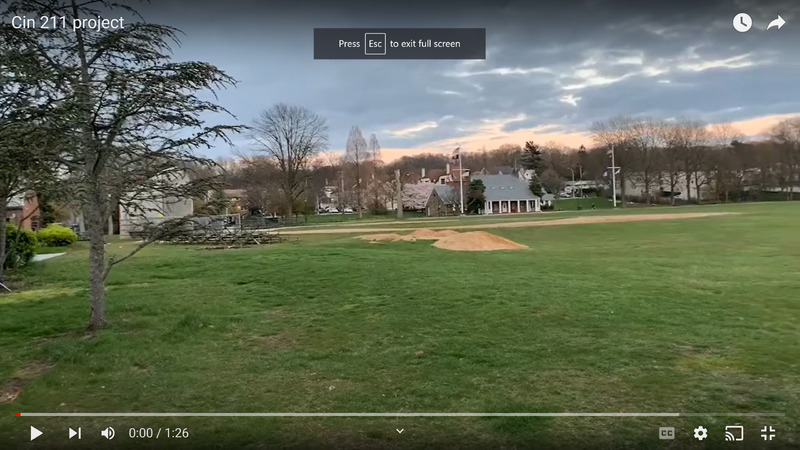 April 5, 2020
April 5, 2020Cin 211 project
a look at the pandemic through the eyes of youtuber @user-hm9gs8by5i -
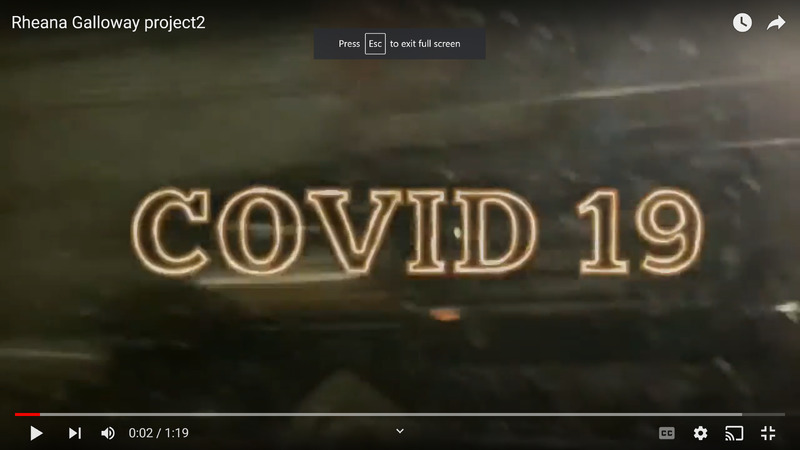 April 5, 2020
April 5, 2020Rheana Galloway project2
a look at the early stages of the pandemic through the eyes of Rheana Galloway. -
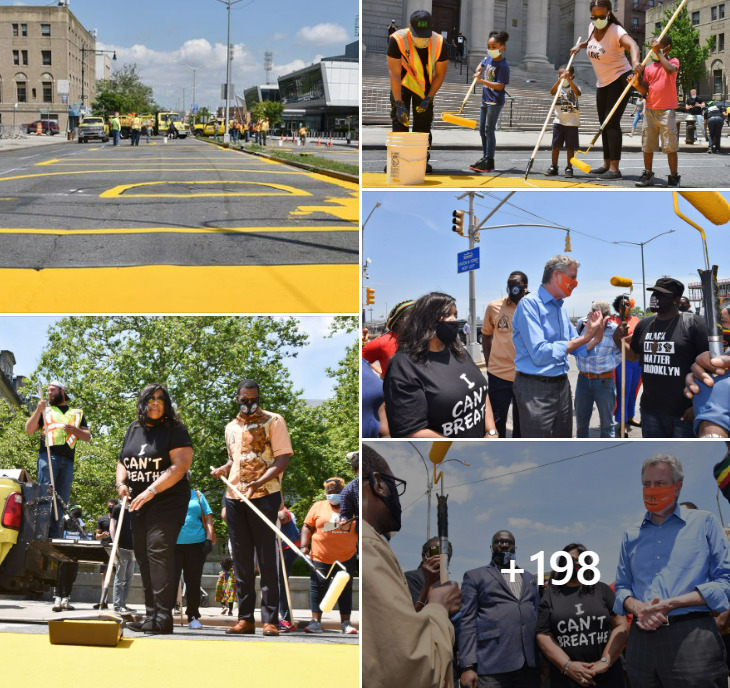 September 2, 2020
September 2, 2020BLM
BLM -
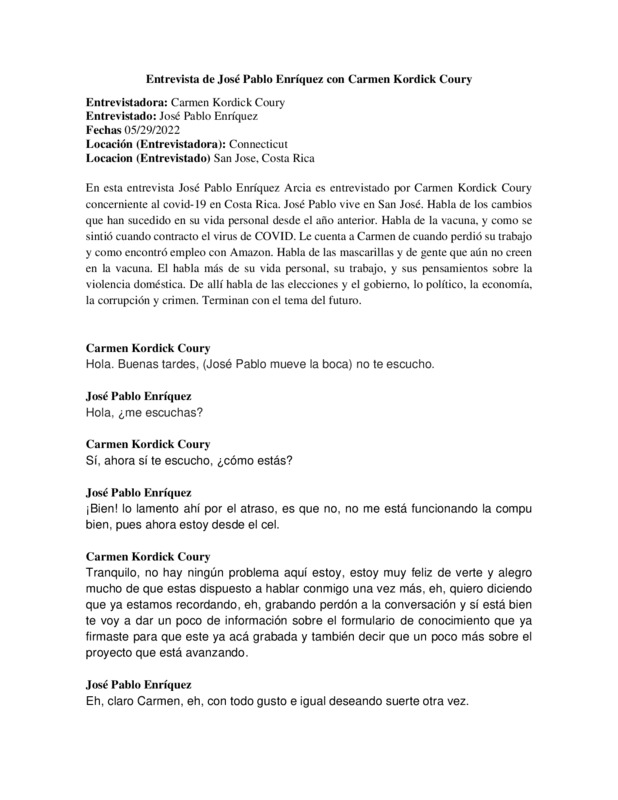 05/29/2022
05/29/2022José Pablo Enriquez Arcia Oral History, 2022/05/29
En esta entrevista José Pablo Enríquez Arcia es entrevistado por Carmen Kordick Coury concerniente al covid-19 en Costa Rica. José Pablo vive en San José. Habla de los cambios que han sucedido en su vida personal desde el año anterior. Habla de la vacuna, y como se sintió cuando contracto el virus de COVID. Le cuenta a Carmen de cuando perdió su trabajo y como encontró empleo con Amazon. Habla de las mascarillas y de gente que aún no creen en la vacuna. El habla más de su vida personal, su trabajo, y sus pensamientos sobre la violencia doméstica. De allí habla de las elecciones y el gobierno, lo político, la economía, la corrupción y crimen. Terminan con el tema del futuro. -
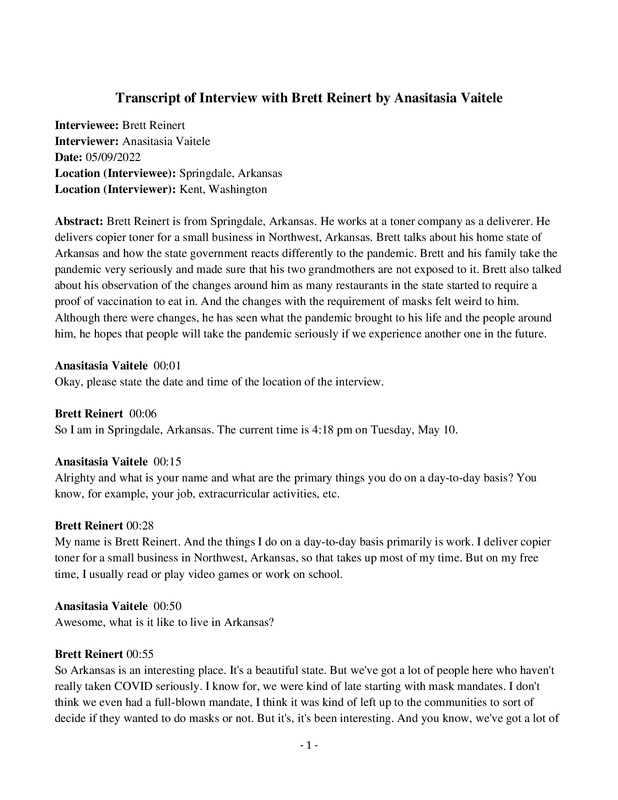 2022-05-09
2022-05-09Brett Reinert Oral History, 2022/05/09
Brett Reinert is from Springdale, Arkansas. He works at a toner company as a deliverer. He delivers copier toner for a small business in Northwest, Arkansas. Brett talks about his home state of Arkansas and how the state government reacts differently to the pandemic. Brett and his family take the pandemic very seriously and made sure that his two grandmothers are not exposed to it. Brett also talked about his observation of the changes around him as many restaurants in the state started to require a proof of vaccination to eat in. And the changes with the requirement of masks felt weird to him. Although there were changes, he has seen what the pandemic brought to his life and the people around him, he hopes that people will take the pandemic seriously if we experience another one in the future -
2022-04-29
College & Religion ft. COVID-19
When I was in the second semester of my freshman year at ASU studying Computer Science, we had started hearing word of a virus slowly spreading around the world. Halfway through that semester, it had reached a point where my universities had shut down in-person sessions and ASU had announced initially a 2-week online period, which then quickly ended up being the rest of the semester. For someone who was extremely to get the full college experience, it was very disheartening to have to cut out a decent chunk of our college life. However, with time and acceptance of the current world situation, I was able to quickly adapt and thrive with the new fully-online learning environment. Although, amidst being able to adapt to the new university online life, it was a very different story when it came to my religion. As Muslims, we are very accustomed to being a close-knit community. It is an obligation to attend a group prayer on Friday afternoons on a weekly basis. This is something I have been attending ever since my parents had taught me this at a young age. However, with the way the virus was spreading and considering how crowded mosques tend to get at Friday prayers, they were forced to close down. This had a major affect on many Muslims as it is a big part of our daily routine. On top of that, when the month of Ramadan had come around, mosques could not stay open for the late-night prayers that everyone was so accustomed to attending on a daily basis. With a little more time and a lot of prayers, this year mosques has opened at full capacity for weekly Friday prayers and nightly prayers at the mosque for the month of Ramadan. From a religious perspective, COVID-19 had taught a lot of us to develop more patience than we were initially used to and have faith in our religion that at the end of the day, whatever happens in this world always has an underlying reason. -
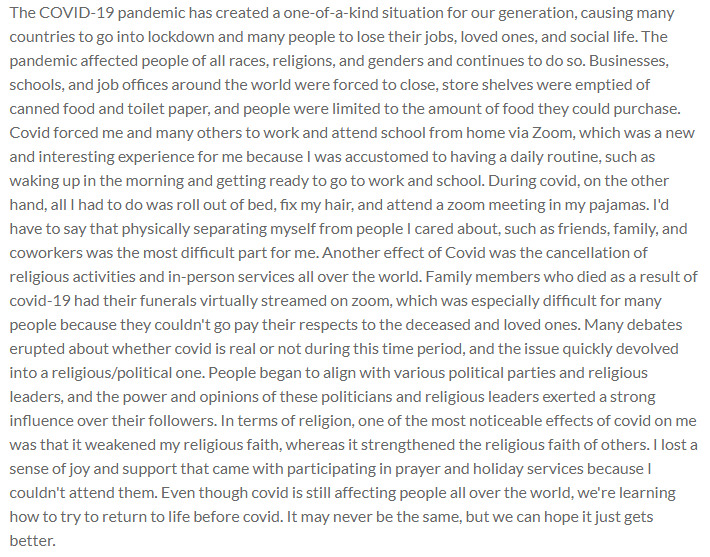 2022-04-28
2022-04-28COVID-19, Religion, and Public Life Reflection
The COVID-19 pandemic has created a one-of-a-kind situation for our generation, causing many countries to go into lockdown and many people to lose their jobs, loved ones, and social life. The pandemic affected people of all races, religions, and genders and continues to do so. Businesses, schools, and job offices around the world were forced to close, store shelves were emptied of canned food and toilet paper, and people were limited to the amount of food they could purchase. Covid forced me and many others to work and attend school from home via Zoom, which was a new and interesting experience for me because I was accustomed to having a daily routine, such as waking up in the morning and getting ready to go to work and school. During covid, on the other hand, all I had to do was roll out of bed, fix my hair, and attend a zoom meeting in my pajamas. I'd have to say that physically separating myself from people I cared about, such as friends, family, and coworkers was the most difficult part for me. Another effect of Covid was the cancellation of religious activities and in-person services all over the world. Family members who died as a result of covid-19 had their funerals virtually streamed on zoom, which was especially difficult for many people because they couldn't go pay their respects to the deceased and loved ones. Many debates erupted about whether covid is real or not during this time period, and the issue quickly devolved into a religious/political one. People began to align with various political parties and religious leaders, and the power and opinions of these politicians and religious leaders exerted a strong influence over their followers. In terms of religion, one of the most noticeable effects of covid on me was that it weakened my religious faith, whereas it strengthened the religious faith of others. I lost a sense of joy and support that came with participating in prayer and holiday services because I couldn't attend them. Even though covid is still affecting people all over the world, we're learning how to try to return to life before covid. It may never be the same, but we can hope it just gets better. -
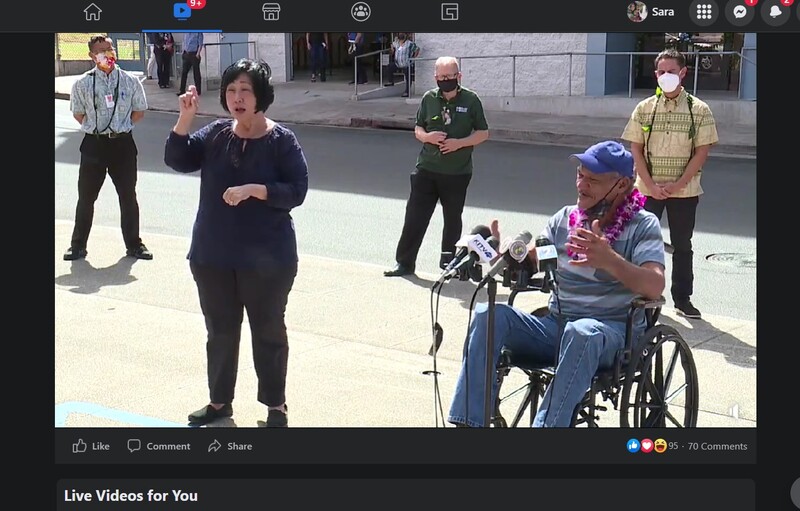 2020-11-17
2020-11-17Punawai Rest Stop For Homelessness
KHON2 News Story on the Punawai Facility. The facility aims to help the community combat homelessness and aid those experiencing homelessness bringing hope to everyone. -
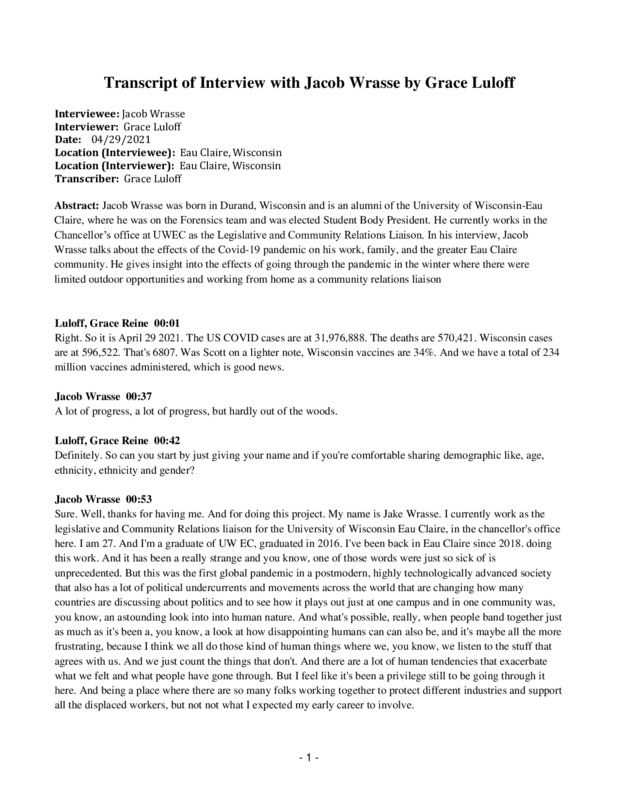 04/29/2021
04/29/2021Jacob Wrasse Oral History, 2021/04/29
Jacob Wrasse was born in Durand, Wisconsin and is an alumni of the University of Wisconsin-Eau Claire, where he was on the Forensics team and was elected Student Body President. He currently works in the Chancellor’s office at UWEC as the Legislative and Community Relations Liaison. In his interview, Jacob Wrasse talks about the effects of the Covid-19 pandemic on his work, family, and the greater Eau Claire community. He gives insight into the effects of going through the pandemic in the winter where there were limited outdoor opportunities and working from home as a community relations liaison -
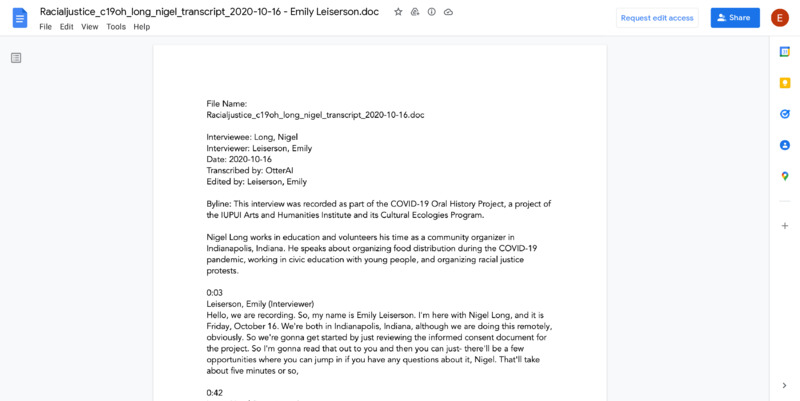 11/04/2020
11/04/2020Nigel Long, Oral History, 2020/11/04
Oral History is an interview with and educator to discuss taking up initiatives to combat social justice and police injustice that has occurred during the pandemic. -
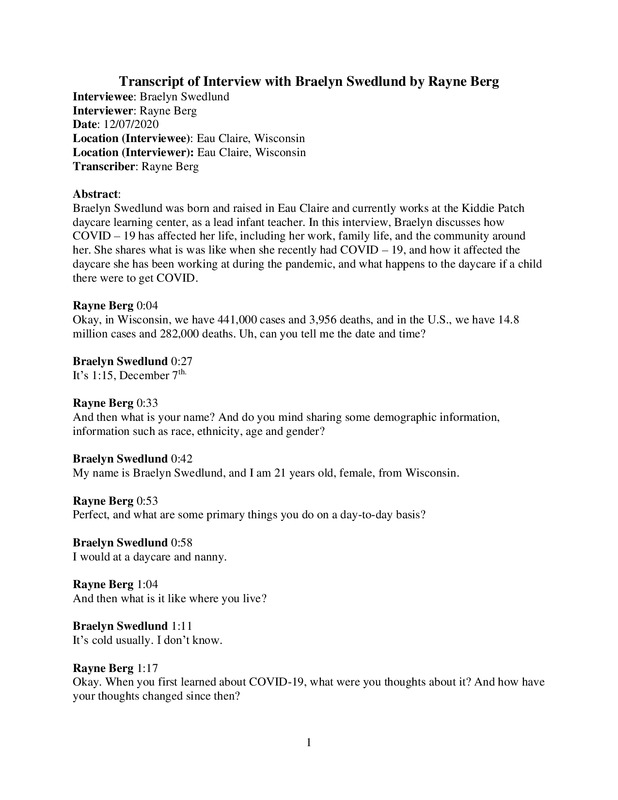 12/11/2020
12/11/2020Braelyn Swedlund Oral History, 2020/12/11
Braelyn Swedlund was born and raised in Eau Claire and currently works at the Kiddie Patch daycare learning center, as a lead infant teacher. In this interview, Braelyn discusses how COVID – 19 has affected her life, including her work, family life, and the community around her. She shares what is was like when she recently had COVID – 19, and how it affected the daycare she has been working at during the pandemic, and what happens to the daycare if a child there were to get COVID. -
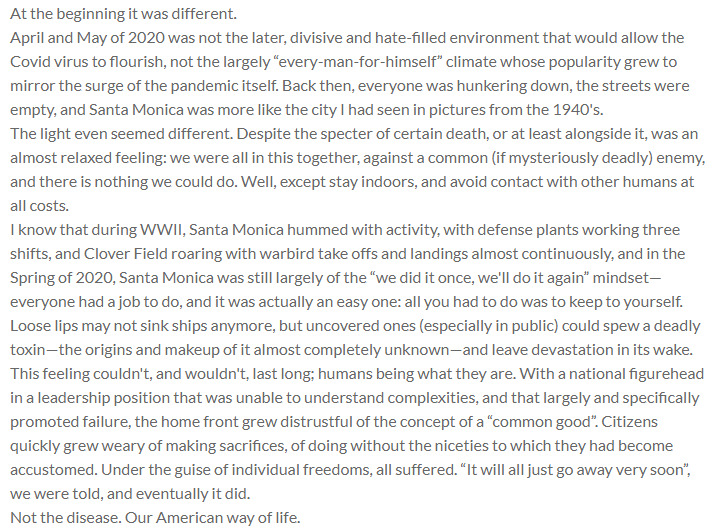 2021-08-28
2021-08-28End of pitching in
At the beginning it was different. April and May of 2020 was not the later, divisive and hate-filled environment that would allow the Covid virus to flourish, not the largely “every-man-for-himself” climate whose popularity grew to mirror the surge of the pandemic itself. Back then, everyone was hunkering down, the streets were empty, and Santa Monica was more like the city I had seen in pictures from the 1940's. The light even seemed different. Despite the specter of certain death, or at least alongside it, was an almost relaxed feeling: we were all in this together, against a common (if mysteriously deadly) enemy, and there is nothing we could do. Well, except stay indoors, and avoid contact with other humans at all costs. I know that during WWII, Santa Monica hummed with activity, with defense plants working three shifts, and Clover Field roaring with warbird take offs and landings almost continuously, and in the Spring of 2020, Santa Monica was still largely of the “we did it once, we'll do it again” mindset—everyone had a job to do, and it was actually an easy one: all you had to do was to keep to yourself. Loose lips may not sink ships anymore, but uncovered ones (especially in public) could spew a deadly toxin—the origins and makeup of it almost completely unknown—and leave devastation in its wake. This feeling couldn't, and wouldn't, last long; humans being what they are. With a national figurehead in a leadership position that was unable to understand complexities, and that largely and specifically promoted failure, the home front grew distrustful of the concept of a “common good”. Citizens quickly grew weary of making sacrifices, of doing without the niceties to which they had become accustomed. Under the guise of individual freedoms, all suffered. “It will all just go away very soon”, we were told, and eventually it did. Not the disease. Our American way of life. -
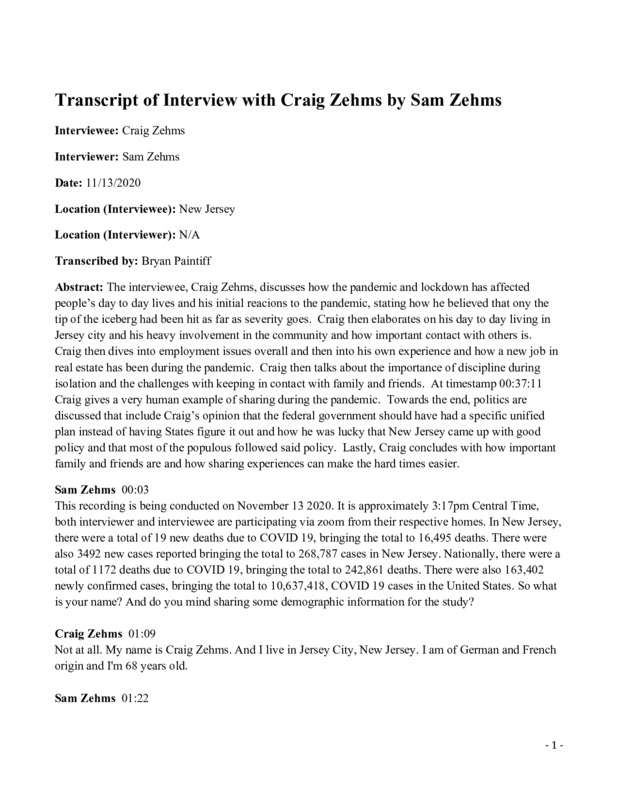 11/13/2020
11/13/2020Craig Zehms Oral History, 2020/11/13
The interviewee, Craig Zehms, discusses how the pandemic and lockdown has affected people’s day to day lives and his initial reacions to the pandemic, stating how he believed that ony the tip of the iceberg had been hit as far as severity goes. Craig then elaborates on his day to day living in Jersey city and his heavy involvement in the community and how important contact with others is. Craig then dives into employment issues overall and then into his own experience and how a new job in real estate has been during the pandemic. Craig then talks about the importance of discipline during isolation and the challenges with keeping in contact with family and friends. At timestamp 00:37:11 Craig gives a very human example of sharing during the pandemic. Towards the end, politics are discussed that include Craig’s opinion that the federal government should have had a specific unified plan instead of having States figure it out and how he was lucky that New Jersey came up with good policy and that most of the populous followed said policy. Lastly, Craig concludes with how important family and friends are and how sharing experiences can make the hard times easier. -
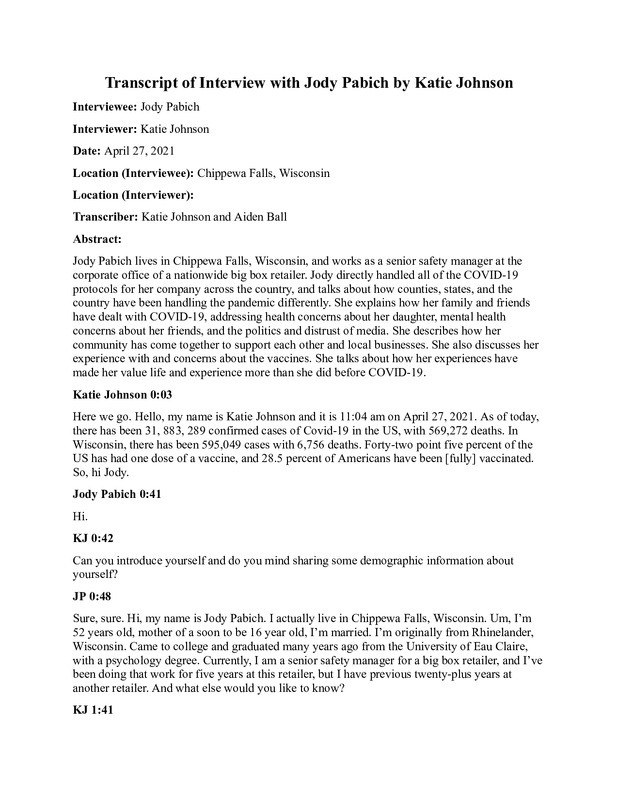 04/27/2021
04/27/2021Jody Pabich Oral History, 2021/04/27
Jody Pabich lives in Chippewa Falls, Wisconsin, and works as a senior safety manager at the corporate office of a nationwide big box retailer. Jody directly handled all of the COVID-19 protocols for her company across the country, and talks about how counties, states, and the country have been handling the pandemic differently. She explains how her family and friends have dealt with COVID-19, addressing health concerns about her daughter, mental health concerns about her friends, and the politics and distrust of media. She describes how her community has come together to support each other and local businesses. She also discusses her experience with and concerns about the vaccines. She talks about how her experiences have made her value life and experience more than she did before COVID-19. -
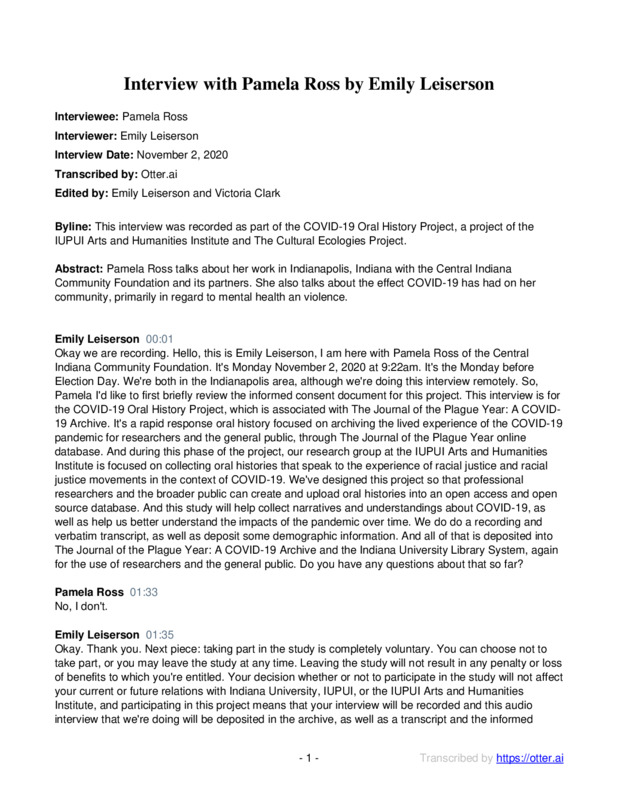 11/02/2020
11/02/2020Pamela Ross Oral History, 2020/11/02
This interview was recorded as part of the COVID-19 Oral History Project, a project of the IUPUI Arts and Humanities Institute and The Cultural Ecologies Project. -
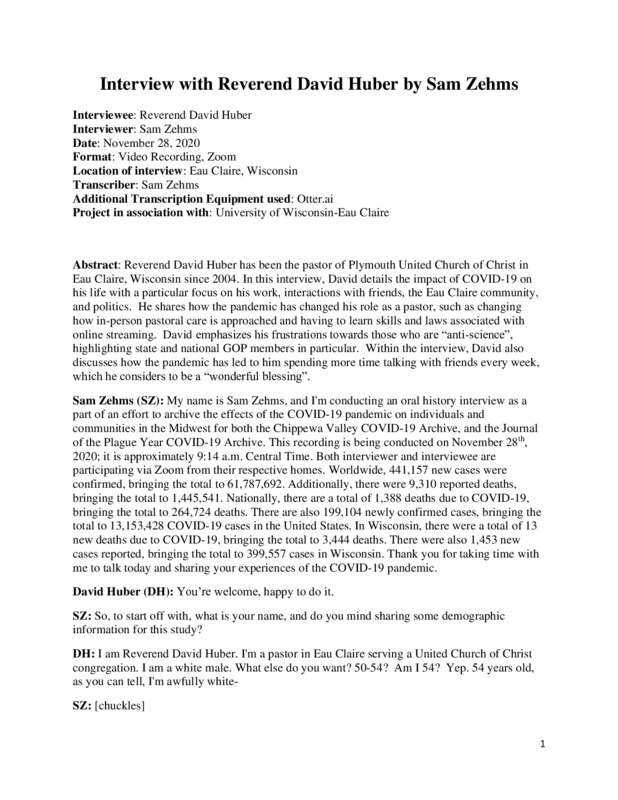 12/15/2020
12/15/2020David Huber Oral History, 2020/12/15
C19OH -
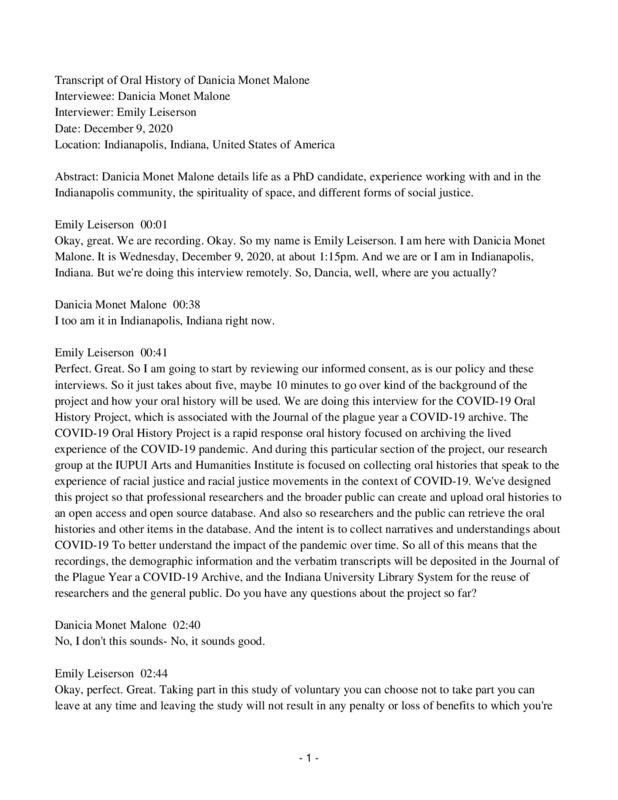 12/21/2020
12/21/2020Danicia Monet Malone Oral History, 2020/12/21
C19OH -
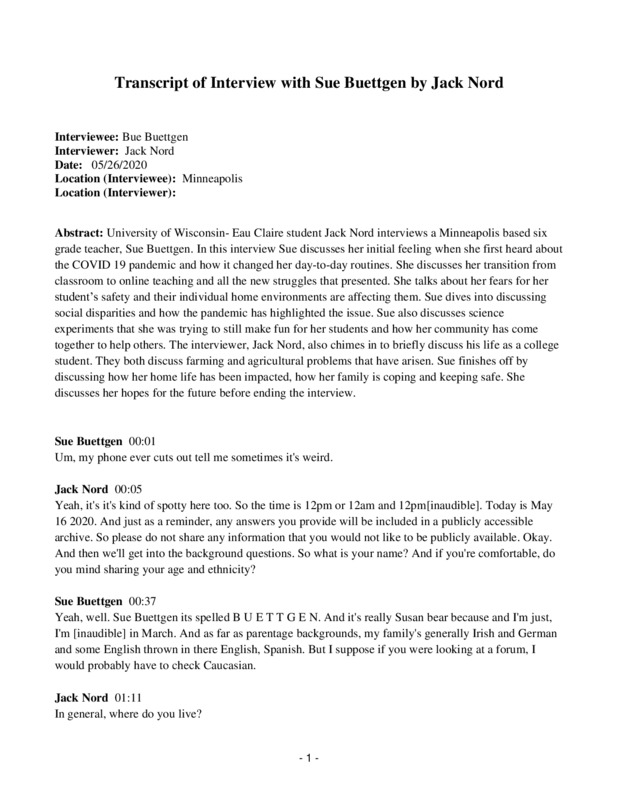 05/21/2020
05/21/2020Sue Buettgen Oral History, 2020/05/16
University of Wisconsin- Eau Claire student Jack Nord interviews a Minneapolis-based six-grade teacher, Sue Buettgen. In this interview, Sue discusses her initial feeling when she first heard about the COVID 19 pandemic and how it changed her day-to-day routines. She discusses her transition from classroom to online teaching and all the new struggles that presented. She talks about her fears for her student’s safety and their individual home environments are affecting them. Sue dives into discussing social disparities and how the pandemic has highlighted the issue. Sue also discusses science experiments that she was trying to still make fun for her students and how her community has come together to help others. The interviewer, Jack Nord, also chimes in to briefly discuss his life as a college student. They both discuss farming and agricultural problems that have arisen. Sue finishes off by discussing how her home life has been impacted, how her family is coping and keeping safe. She discusses her hopes for the future before ending the interview. -
2021-08-10
Zaragoza Training [Duplicate]
This screenshot of Zaragoza leaders training for their upcoming Zaragoza days during the summer of 2021. These students were wearing masks accommodating to COVID-19 guidelines. The item was originally posted by the Zaragoza Leaders Instagram, a page used to safely reach out to students. This Instagram post shows Zaragoza team leaders following COVID-19 guidelines established by the university. In the days leading up to Zaragoza Orientation, team leaders were required to attend planning events to ensure the proper execution of safe orientation days for students and parents. Through this post, Zaragoza leaders were able to reach out to students and the St. Mary’s community in a safe and timely matter. Despite the restrictions brought to college campuses by the pandemic, St. Mary’s was able to find creative ways to remain connected to the community -
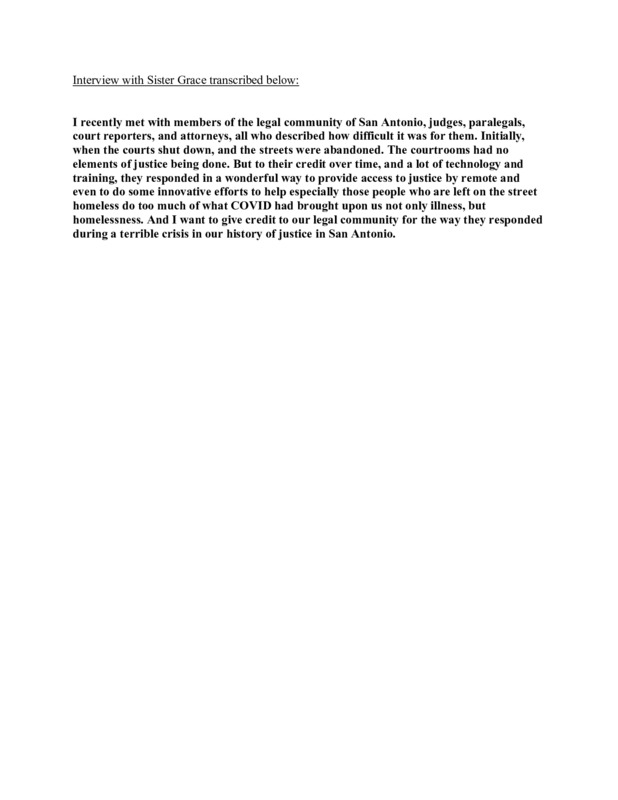 2021-09-22
2021-09-22Helping Others during Covid-19 Pandemic
This is an excerpt from a video interview with Sister Grace that I and another student in my class did for a work project. Sister Grace is the Chaplin of the Law School at St. Mary’s University. Sister Grace graduated from St. Mary’s 1978 and worked in the undergrad Ministry and by 1993-94 in Law Ministry. Sister Grace has enjoyed watching students grow and succeed to becoming great people for the community. I used this excerpt because Sister Grace is someone who helps out the students and community and during the pandemic, she met a lot of people that ere going through hard times. Her and the church got together to help distribute food and clothing to the homeless, or whoever needed aid during the pandemic. She wanted to make sure everyone in the community was taken care of. Also, she even talks about how she got plenty of time to do more things during quarantine. -
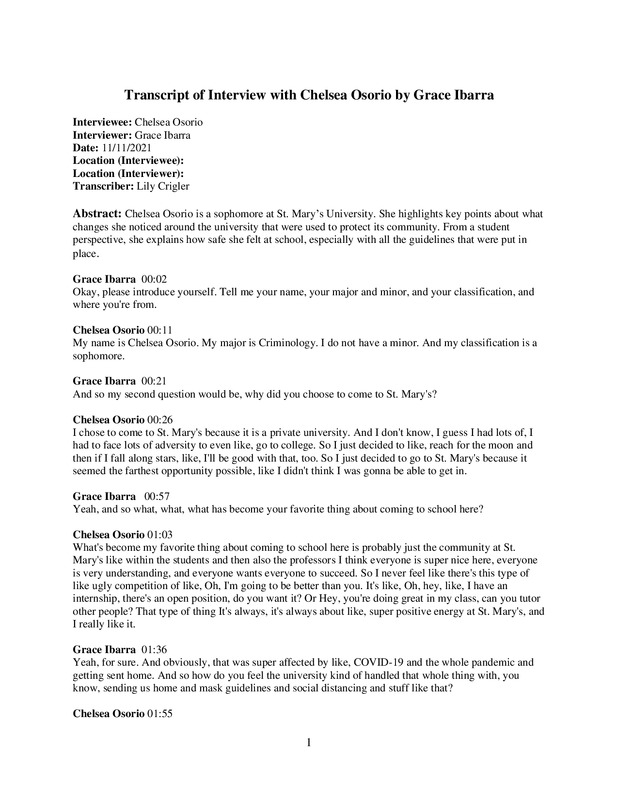 2021-11-11
2021-11-11Commuter Student Perspective on University Changes
Chelsea Osorio is a commuter student at St. Mary’s University and among the many personally affected by the COVID-19 pandemic. In her interview she highlights key points about what changes she noticed around the university that were used to protect our community. From a student perspective, she explains how safe she felt at school, especially with all the guidelines that were put in place. This goes to show how St. Mary’s students, faculty, and staff were committed to ensuring not only a healthy online environment but also making sure we returned to a safe and healthy community. -
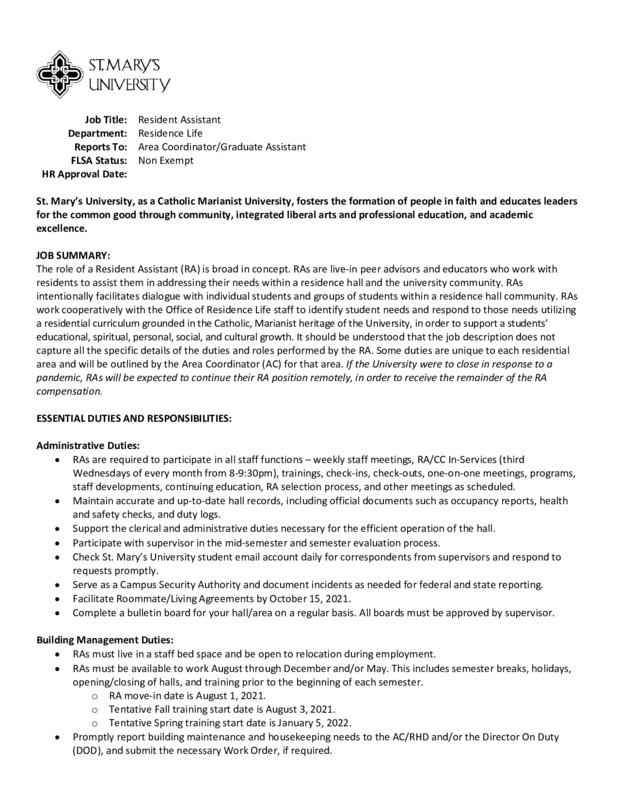 2021-08-16
2021-08-16Fall 2021: Creating Community No Longer Virtual
After attending college online and having virtual classes, many students were eager to come back to the St. Mary’s University community. However, creating a community has looked different from pre-covid semesters. Before the pandemic hit, student life and university programming council hosted many events. Residence life and resident assistants also hosted events for residents in the dorm halls. When everything was virtual resident assistants tried engaging with residents and creating community online. This consisted of watching movies, playing games, or just having a space to talk to each other. Now that residence halls are open and most classes are in-person, creating community looks a bit more like pre-covid semesters. Resident assistants are required to create engagement opportunities for their residents. There are several ways to do this like traditional planned programs, spontaneous get-togethers, bring-along events, etc. Although the programs resemble pre-covid semesters more than the last three semesters, covid is still something to beware of. When planning events, resident assistants consider how many people might attend, whether the space is indoors or outdoors, will there be food, etc. Resident assistants are also required to uphold and enforce covid policies like mask-wearing. So, while also trying to create a sense of community, residence life and student staff still try to create a safe environment. -
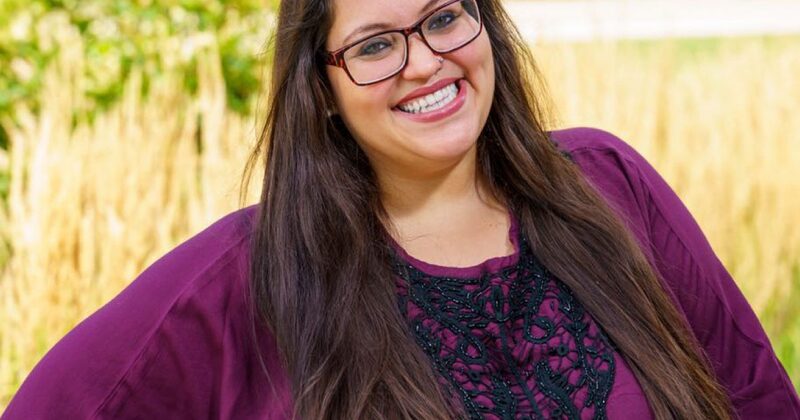 2021-11-23
2021-11-23A new Director for a renewed office
Maria Del Mar Aponte Rodriguez is the new Director for the Center of International Programs at St. Mary’s University. After a semester of being in charge, Aponte tell us more about her experience as the new leader in the office and her future goals to make the CIP Office more open and warming for international students. As COVID has impacted several levels of the office, Aponte comments how she overcome these issues and how she is preparing a new plan of action for Fall 2022. -
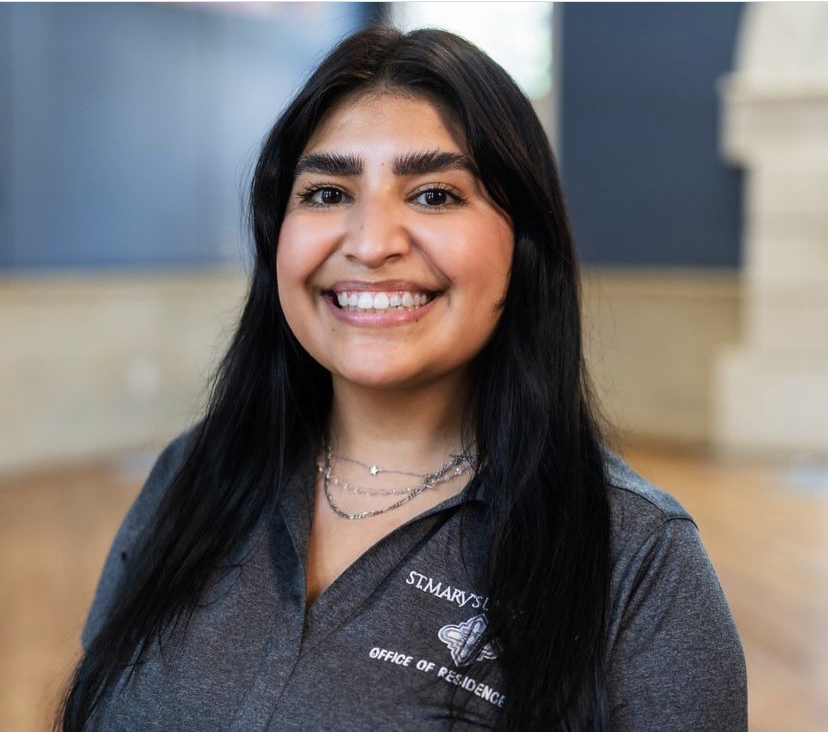 2021-11-21
2021-11-21Andrea Moreno Oral History, 2021/11/21
The covid-19 pandemic has changed the college experience for all students. It changed the way we work, study, socialize, etc. How we adapt and adjust to attending university during the pandemic differs per person and their previous experience. For Andrea Moreno, an experienced resident assistant, the pandemic still left things uncertain. However, her unique experience and “normal” first year experience allowed her to remain as a resource for residents. Despite the move to online during Spring 2020, Moreno still reached out to students to check-in. Andrea Moreno also said that the Office of Residence Life even served as a resource for student staff like herself. Although the pandemic changed many things about the college experience, St. Mary’s University office of Residence Life and student staff (resident assistants) still manage to serve the campus community. -
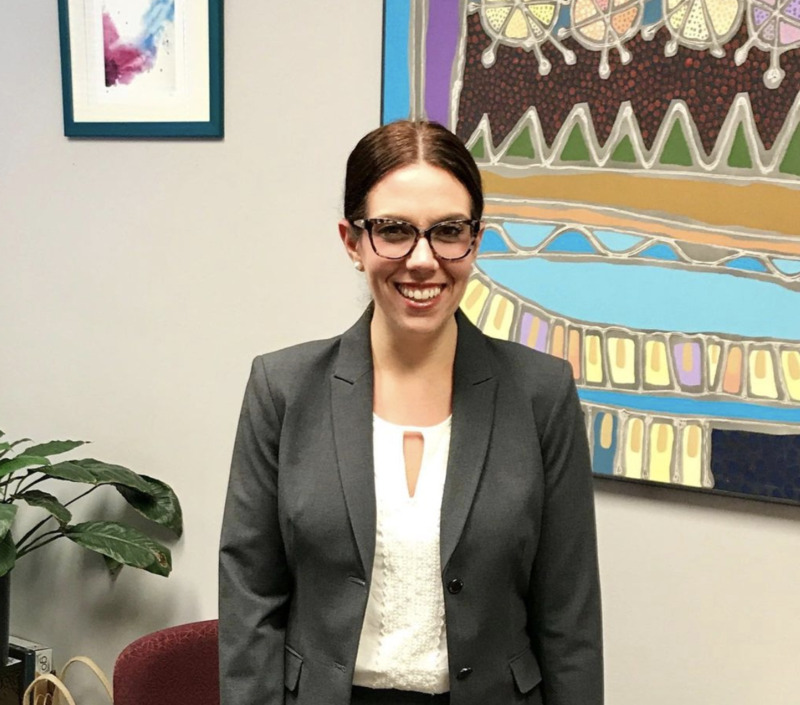 2021-11-03
2021-11-03Oral History: Clare Acosta
Through this oral history, Clare Acosta and I develop a conversation about both the Community Engagement office work and the program of Empower: Ecuador. The conversation was specifically focused on the before and after of COVID-19 and also what was learned from the process. It is a very deep conversation that I really enjoyed and know that Clare also did. -
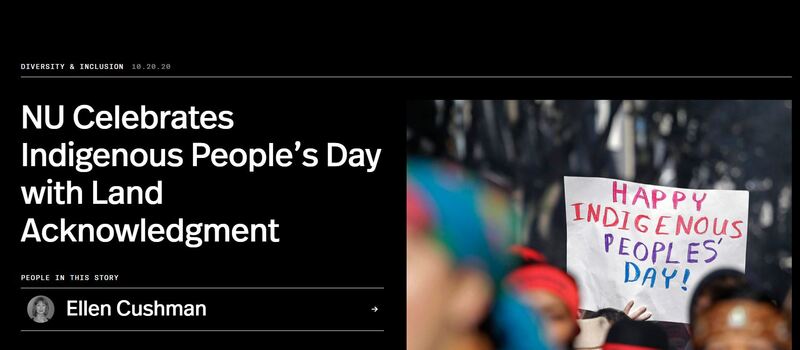 2020-10-20
2020-10-20Northeastern Virtual Indigenous People's Day 2020
Article regarding virtual Indigenous People's Day. -
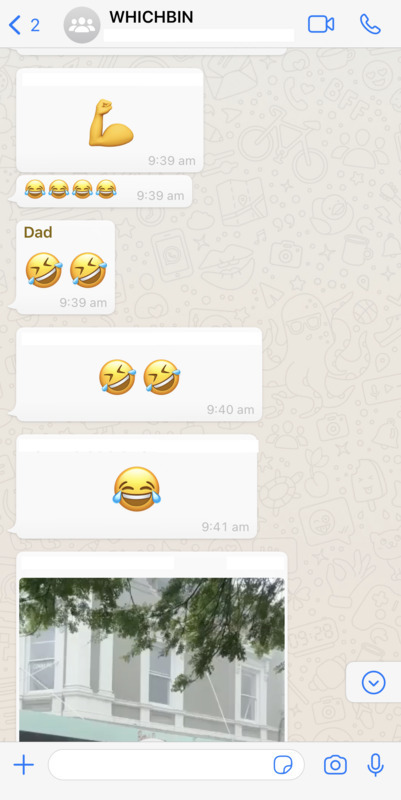 2021-09-10
2021-09-10HIST30060 Group-chat shenanigans
Lockdown shifted the nature of community dynamics in our local area. We live in a peri-urban region on the outskirts of the Yarra Ranges; as such, neighbouring properties are separated by large swathes of Australian bush. This can be isolating at times; it’s very different to suburban living. Our street (which spans about 7kms) and adjacent streets have a WhatsApp group chat named ‘Fireguard’, which allows residents to share information about fire safety, planned burn-offs and emergency warnings. However, during lockdown the chat was increasingly used for the purposes of socialisation. Suddenly, distant neighbours began sharing jokes and engaging in conversations about lockdown living, through the chat. The chat became a site of social interaction that the members of our area probably didn’t realise they needed, until they did. We eventually decided to create a separate chat for general/social purposes only, the title ‘WHICHBIN’ constituting a friendly inside joke about one particular chat member who never fails to ask, “which bin?” she needs to put out for collection each week. -
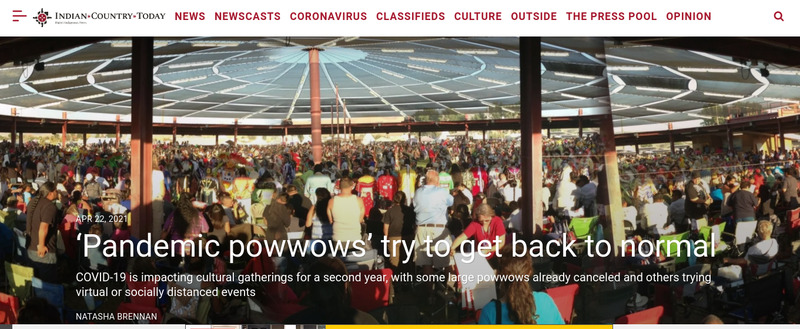 2020-09-14
2020-09-14Virtual Pow Wows - A result of Covid -19
Every year as a tradition Tribes of Native Americans gather to celebrate through song and dance at events known as Pow Wows. These events reinforce long-honored traditions, the most important being unification. The Pow wows allow for the togetherness of the people and the connectedness of the tribes. Covid -19 brought an abrupt halt to that for hundreds of indigenous tribes across the U.S and Canada. As a result, the only way to share some of these meaningful traditions was to offer a virtual option. While not the same it did allow for some of the singing and dancing competitions to take place. The long-term after effect though is that not having the in-person Pow Wow resulted in a significant loss of revenue for those tribes that were hosting the event. Pow Wows bring in significant revenue from vendors and non-indigenous spectators. This loss has had a trickle-down effect on the indigenous communities making it more difficult to endure the pandemic. As a parent of a Northeastern student, not having the ability to have my daughter physically share in the in-person powwows is disappointing. Pow wows are more than just celebrations they are an opportunity to connect with your identity and heritage-which is vital for the younger generations. -
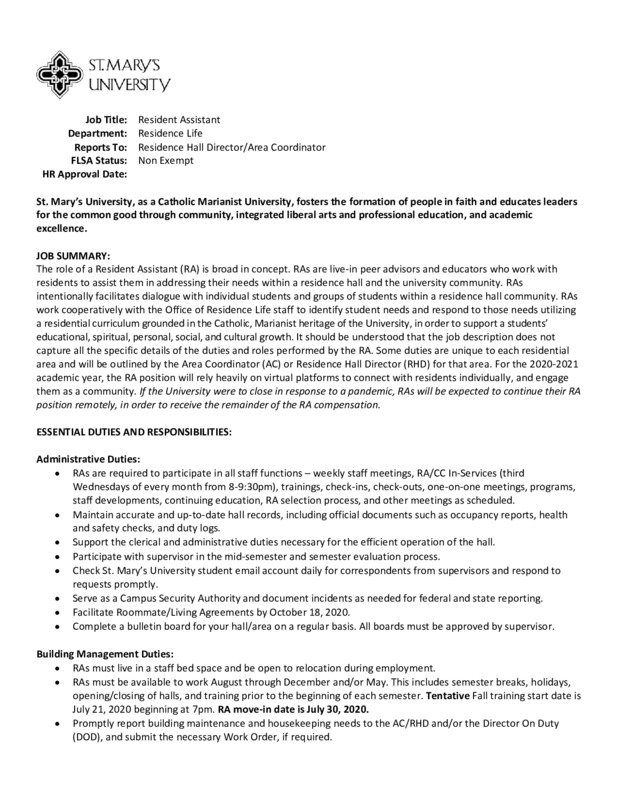 2020-06-30
2020-06-30Resident Assistants: When Residence Halls Re-Open
After being sent home during Spring 2020 the Office of Residence Life changed the way it functioned. With that, student staff like resident assistants also had to change how they did their jobs. Creating community, health and safety checks, and engagement opportunities were all completed virtually. As many discovered, going to college via zoom came with many difficulties. What about when campuses were opening back up? What about the uncertainties regarding the growing pandemic after Spring 2020? In preparation for Fall 2020 and anticipation of re-opening residence halls, policy changes were made. Students were also asked to join the "Protect St. Mary's Pledge", a commitment to holding ourselves and our community accountable, ensuring we take the necessary precautions and follow policy. The Office of Residence Life and resident assistants were at the forefront of enforcing these new policies and keeping dorm halls safe. Resident assistants played a significant role in trying to make campus and residence life a bit normal again by creating community and engaging with residents, this time while taking covid-19 precautions. In a time of great transition and uncertainty, resident assistants served as student health ambassadors and vessels for the University's mission and policies. -
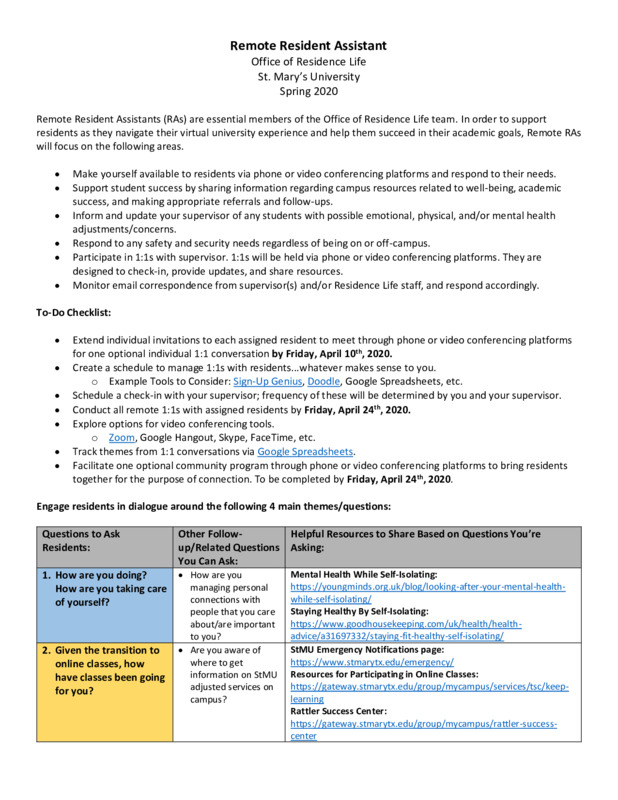 2020-03-20
2020-03-20How To Be a Resident Assistant During Covid-19
This is a pdf of the resident assistant job description when St. Mary's University decided to go virtual. The described duties of the resident assistant showcase how St. Mary's Residence life was trying to serve students regardless of being off-campus. The job description really shows the sense of community that exists on campus and persevered virtually. As a freshman during Spring 2020, I along with many others, never expected to be sent home. I also never expected an institution to care so much about the well-being of its students especially when the whole world was in chaos at the time. However, as seen here, even student staff like resident assistants reached out and made themselves available to their peers. Resident assistants had 1:1 conversations with residents at home designed to check-in and share resources. Even the resident assistants themselves were required to have one-on-one meetings with their supervisors also to check-in. While student staff was trying to facilitate community and safety virtually, they too were being taken care of by residence life. -
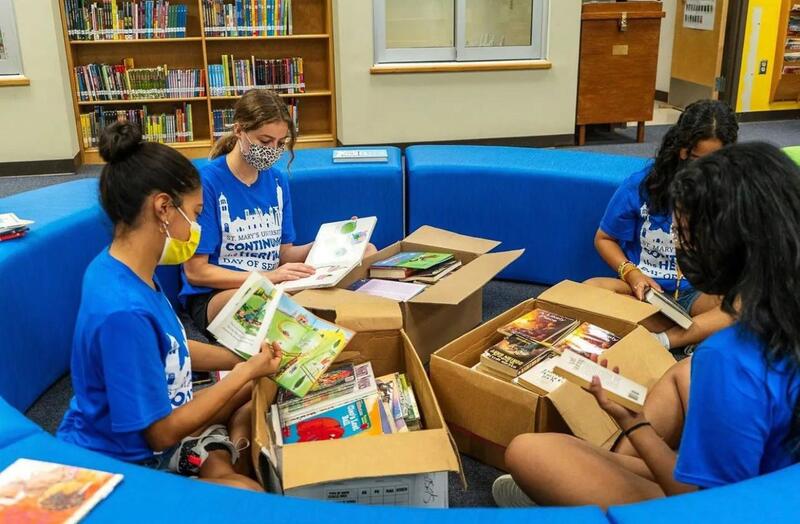 2021-08-21
2021-08-21Every story matters – Continuing the Heritage 2021
Continuing the Heritage is a wonderful event that St. Mary’s puts on for its students and staff. It allows all members of the university to participate in a day of service, offering over 30 volunteer opportunities to join on that day. CTH not only brings the student community together but also connects the students to the city of San Antonio and its community. Even with Covid, when everything went remote, St. Mary’s still found ways to make CTH happen and found opportunities for students to volunteer remotely. This year was my second time participating in CTH and I really enjoyed it. The first time I did it was freshman year and I worked with No Graffiti SA and this year I helped in the library at Locke Hill Elementary School. Both times were very fun and rewarding as I got to not only volunteer with friends but also be able to spend some time giving back to my community even during a pandemic. -
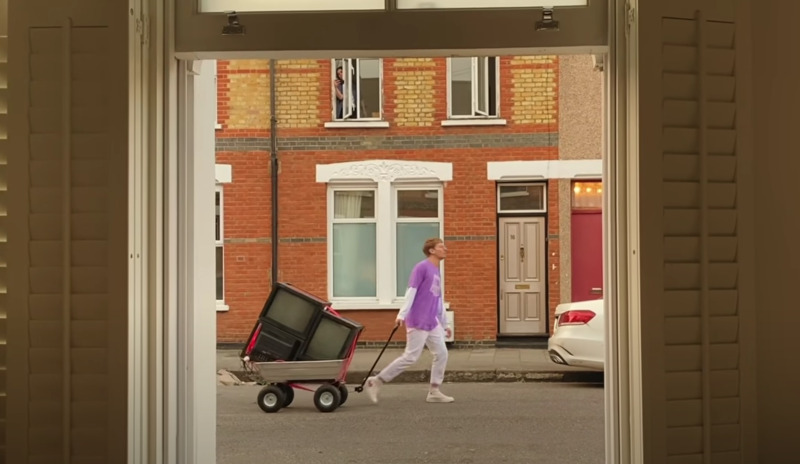 2020-06-30
2020-06-30Glass Animals, Heat Waves- A Lockdown Music Video
As the number one song in Triple J's Hottest 100 of 2020, Heat Waves is a song that is irrevocably linked to the Covid 19 pandemic. While its lyrics about loss and longing and the inability to fix anything aren't specifically about the pandemic, its themes resonated with audiences as they mourned the loss of their old lives and lamented over their helplessness. Although it was released in 2020, its popularity continues to grow in 2021, proving the song's staying power. The music video is incredibly unique and truly representative of the time, capturing how neighbours and strangers struggled to connect despite lockdowns and physical barriers. In a comment under the YouTube music video, Glass Animals wrote: "this video is a love letter to live music and the culture and togetherness surrounding it. It was filmed at the peak of the lockdown in my neighbourhood in East London by the lovely people who live around me, just using their phones. These are people who are usually out at shows, in galleries, going to cinemas etc. These venues are left empty now, and many of them will not survive. The song is about loss and longing, and ultimately realizing you are unable to save something...and this video is about that but for art, being together, and human contact. Huge love and thank you’s to everyone who got involved and helped out. When everyone was leaning out of their windows filming, I felt that same sense of togetherness and spine-tingling energy that happened at live shows. It made the coldness of performing to an empty room with the band stuck on screens feel even more heart-breaking." HIST30060 -
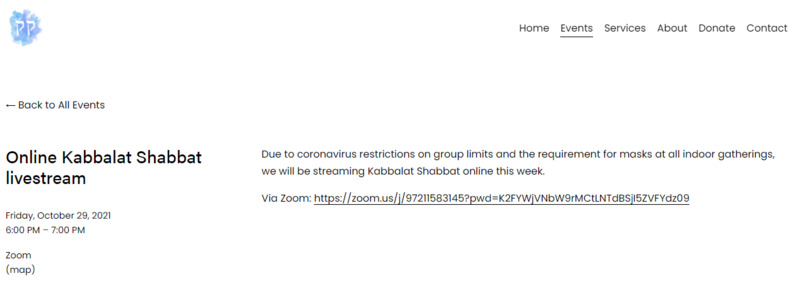 2021-10-29
2021-10-29Kehilat Kolenu Online Services - Jewish Melbourne
During the lockdowns and COVID restrictions in Melbourne, Jewish communities found ways to connect. Especially important are the Friday evening services for Shabbat. Kehilat Kolenu, a Humanistic Jewish organisation held zoom meetings in place of their usual Kabbalat Shabbat services. Especially during the loneliest, most isolating periods in my lockdown experience, these zoom meetings where I could hear the songs of my culture helped me feel spiritually and socially reconnected. HIST30060 -
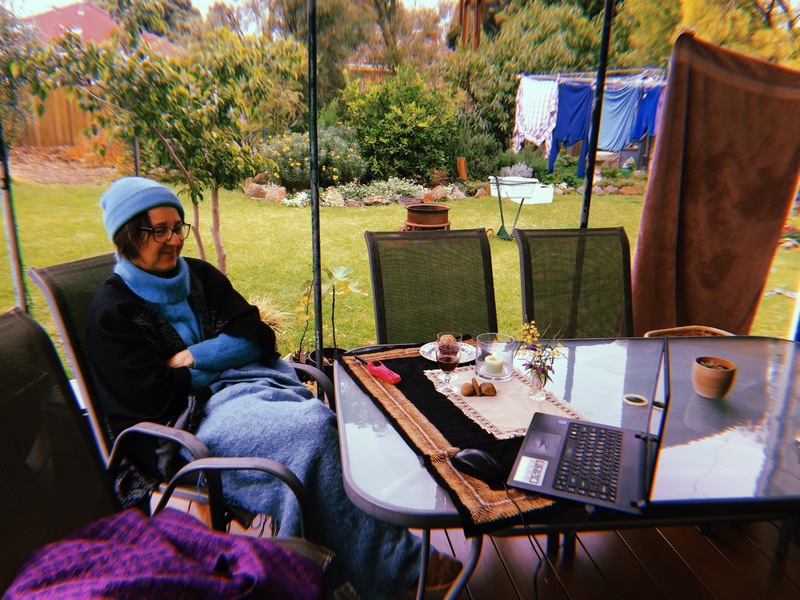 2020-05-03
2020-05-03HIST30060 Zoom Church
This photo was taken in May 2020, when Melbourne restrictions prevented religious gatherings from taking place. I attend Westgate Baptist Community church in Yarraville in the western suburbs of Melbourne, and it had transitioned to zoom for its church services by this point. On the day this picture was taken, we were meant to organise our own bread and wine for the ritual of communion. It was strange to source these elements on our own and even stranger to just pass them to each other instead of being given them by the pastor. It probably took some sense of gravitas and 'specialness' out of the ritual. At the same time though, it was evident that in a very precarious, unprecedented time, this community was really hanging on to such rituals for some normalcy and comfort in a sense of the divine's presence. We would not be back to in-person services until February 2021. -
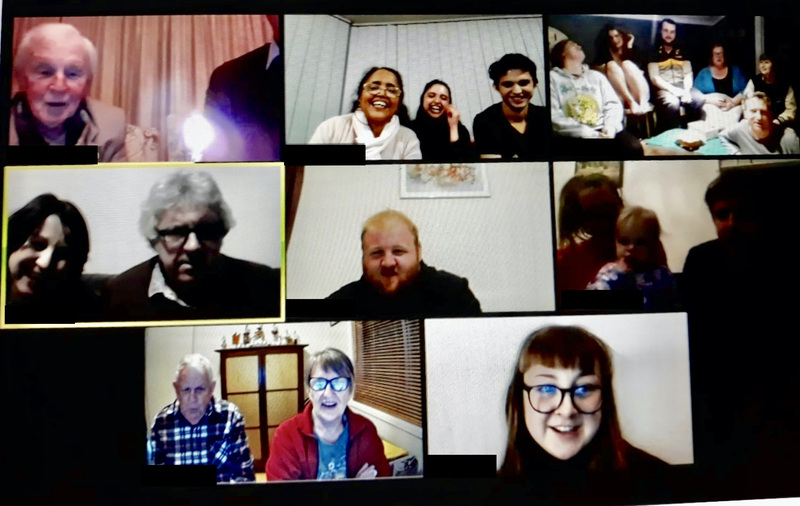 2020-09-18
2020-09-18HIST30060 Zoom Family Gatherings
This screenshot was taken during a zoom call with members of my Dad's side of the family in September 2020, during Victoria's third COVID lockdown. At this point, we hadn't seen each other since early June of that year, which was unusual - in normal times, we would gather in person at least once a month, but lockdown prevented social gatherings with anyone outside one's household. We were zooming in from 8 different locations and with competing voices, technical difficulties and zoom-illiterate older relatives, it wasn't quite the same experience as catching up in person. One thing we realised very quickly was that it was impossible to initiate more intimate, one-on-one conversations with people on zoom. Instead, each screen in the call got a chance to give an update and we missed the more personal conversations. It was also strange seeing families grouped together in this virtual family gathering. In person, certain people in the family would naturally form groups based on age and gender and families wouldn't appear so much like a unit as in these calls. Although it was good to see people's faces again, I think we would all agree zoom calls are a poor substitute for the real deal. -
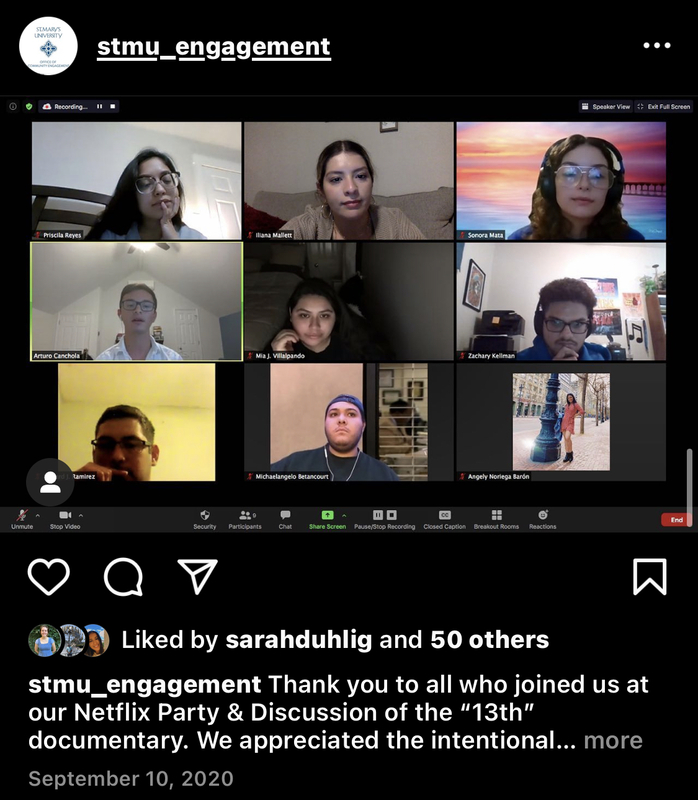 2020-03-15
2020-03-15Community Engagement: Transitioning to Zoom
Previous to COVID-19, everything related to community engagement was hands-on, face-to-face, and in-person. However, right after spring break in 2020, everything changed because of COVID-19, and new ways of interacting with the community and each other were used. To demonstrate this I uploaded for this item a screenshot from the Instagram page of the Community Engagement Office of St. Mary's University. Almost none of us were used to zoom and in a couple of weeks zoom turned into the number one platform used by businesses and schools as a means of communication and our community engagement was not the exception. One of the activities that were made during COVID-19 was a Netflix Party through zoom with many students engaged through the network. As a personal experience, I was part of a group/class called Empower: Ecuador that was very focused on personal relationships and community building, and transitioning to zoom was not easy. However, we were able to culminate our semester and encounter new ways to connect with each other through zoom and other social platforms in meaningful ways while keeping each other safe from getting sick. It was a matter of caring for each other so deeply that connecting in person was no longer an option, but our intentionality to connect and interact with each other grew in many other creative ways to achieve the goal of community engagement despite all the difficulties that we were all going through. -
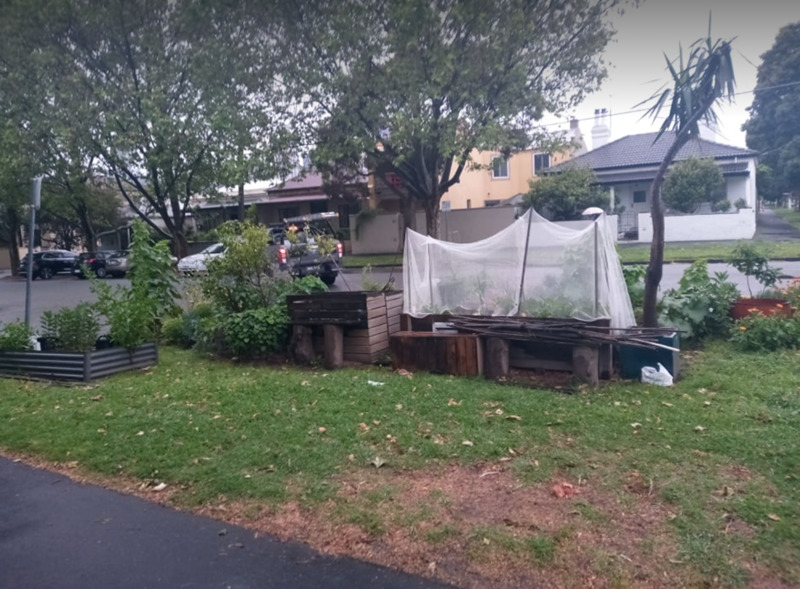 2021-10-07
2021-10-07Positives of the pandemic
This is a photo of a community garden at a park very close to me. Although this project existed before the pandemic, it has flourished much in this time to become a beautiful large garden with many different plants. I think this reflects some of the positive effects of the pandemic, as for some people, it gave them the chance to focus on things they might not normally have. Community engagement and connection in this way has provided hope for many people during this time. -
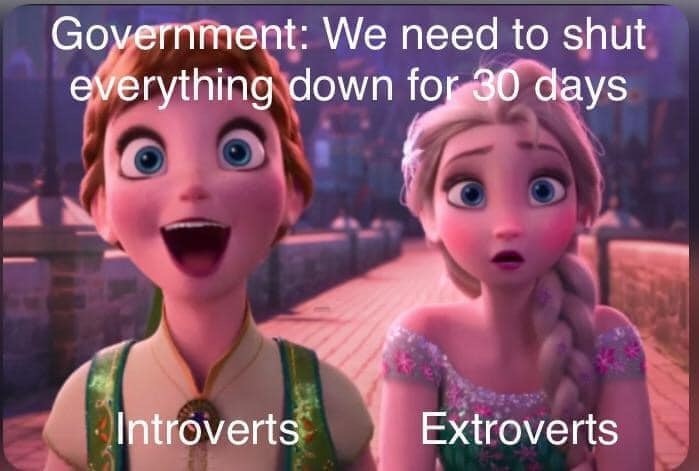 2020-03-23
2020-03-23Introverts vs. Extroverts during Lock Down-A meme
I am an extrovert. I get my energy from people. I love people. I surround myself with a lot of people. The three months leading up to the pandemic lock down I had been surrounded almost every day by almost 200 of my closest friends, people I call my family because we worked together on a theater production called Susanville Best of Broadway. When the pandemic hit, the show was cancelled and then even my work sent everyone home. I was home with my kids. And it was very quiet. We are a very active family involved in many local community projects. I have meetings every week and they have sports. All of sudden, we were home. And if I saw someone I knew while out in public (the grocery store) it was weird. I didn't know if I could hug them (I didn't) and would just awkwardly wave from a distance. It was terrible. In fact, my girls struggled and would still have friends over. I made them limit it to just one friend, but even then, we struggled. This meme really got to me. I remember hearing friends say how their life didn't change at all because they were already homebodies. The idea of being home was actually very stressful. I ended up working at my work, because being home all day to work was not very much fun. I learned a lot about myself during that time. Most importantly, I need people in my life. -
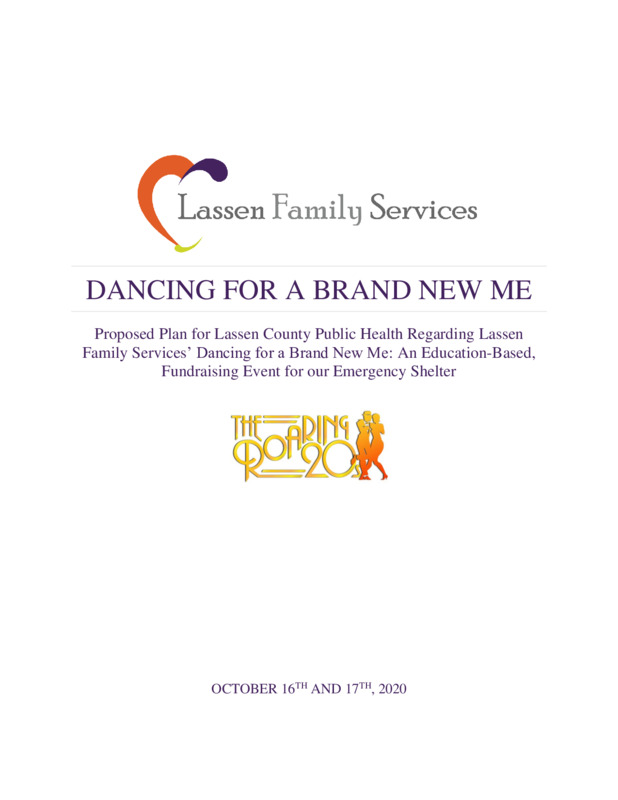 2020-10-20
2020-10-20A Public Performance in the Middle of the Pandemic
For the last few years, I have coordinated an event called, Dancing for a Brand New Me. It is a fundraiser event that is designed to not only bring about awareness to domestic violence in Lassen County, but it is a fundraiser to help pay for the the mortgage of the shelter for victims. Last year was the 7th year that local "Susanville Stars" were partnered with local professional choreographers to dance three dances before judges similar to NBC's Dancing with the Stars. Our local stars are usually very active community members who spend about 5-6 months learning the dances, but they also fundraiser to get sponsors. It becomes a fun, healthy competition to see who can out dance and out raise funds with each other. Most of the choreographers have participated in the event for many years. It has become a community favorite, selling out tickets both nights the third weekend in October. In 2020, we had to come up with four different plans on how we would perform, because of the pandemic. Our plans included only performing a livestreamed show to relocating our event outdoors. Normally, the event is performed in the local Veterans Hall that is equipped with stage, lights, and sound. In September 2020, I wrote a proposal to public health outlining in detail how we would manage the event. It took weeks for public health to get back to us. But what they approved was that our event could be held at the local High School football stadium, we had to mark off 6-foot distance, require mask, and have screenings at the gate. We had hand sanitizer stations and we were instructed two things: limited seats (200 people) and whatever we did, when we live streamed to not show the audience. The article that I attached talks more about the event than the obstacle it took to put on the event. It is incredibly difficult to move sound equipment in and out of a football stadium every day for a week. It is hard to do a staged performance when you are surrounded by a dirt track. It is hard to have your dressing room be the football locker room. It was very difficult to make all of the modifications and changes that we did. But we did it. And it was an amazing event. Even though we weren't supposed to, we have about 400 people in the audience each night. Most did not wear mask and most were sitting very close to each other. Even one of the public health officials sat in the audience not following the "rules". The event raised over $25,000! Just two weeks after our event, many of the Halloweeen events led to a Covid-19 outbreak in our community and the cases rose rapidly. Prior to Dancing for a Brand New Me 2020, we had zero cases. After Halloween 2020 our cases skyrocketed for a small town. I saw that we happened to just squeeze in one performing arts event just in time before things got bad. I feel like we were lucky and it was probably why the event was so well attended. I have the newspaper article and my proposal attached. -
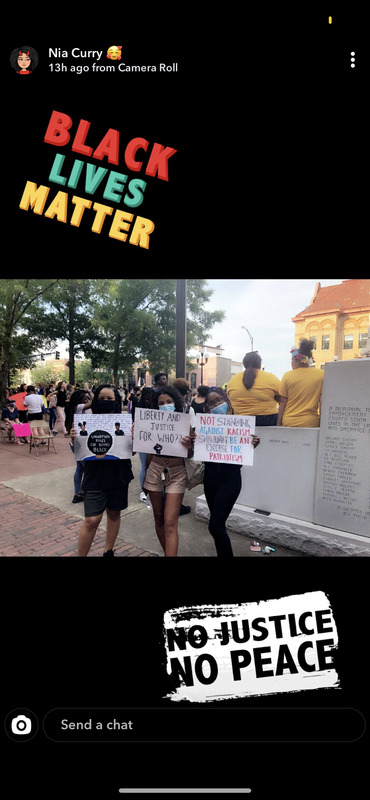 2020-06-04
2020-06-04Small Town, Big Affairs
The challenges of both COVID-19 and the lockdown illuminated the disproportionate burden black and brown communities have been facing with jobs, communities, and police. In the midst of the profound trauma of George Floyd's death, many communities had to come together to address what parameters were they enforcing for both the health and safety for its member. Many protest like the one shown in Anderson, South Carolina took place May-August of 2020 to demonstrate how a growing pandemic forced individuals to think about others' vulnerabilities--specifically those inflicted from police brutality. -
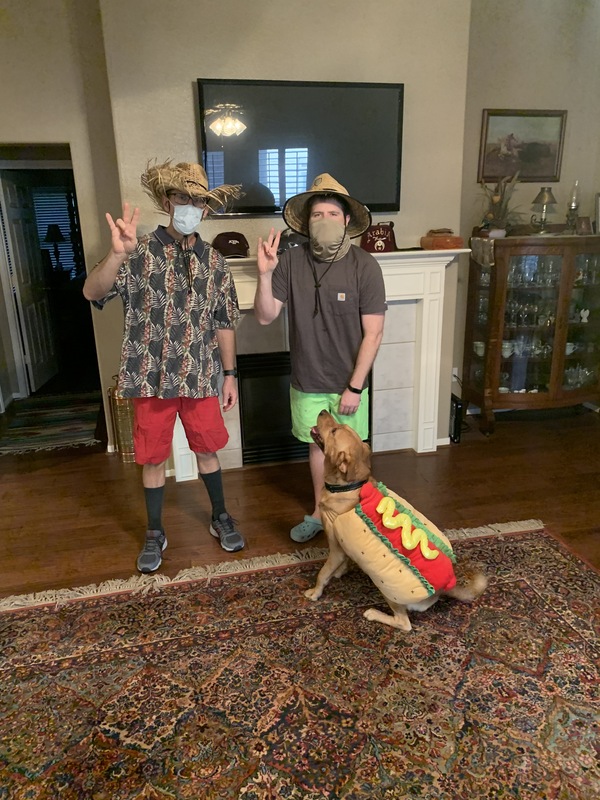 2020-06-04
2020-06-04Hawaiian party at home!
Triggers Hawaiian Party Our experience through Covid and the lockdowns have greatly affected every aspect of social life from 2020 through 2021, this is a photo of Alan Montgomery (left) and Jake Montgomery (right) getting ready to celebrate Triggers (the dog) adoption and birthday via Hawaiian theme. Usually, we invite lots of friends and their pets to Trigger’s birthday/adoption day, but due to the virus, we kept it very small with just three other people and 2 of Trigger’s favorite playmates. Due to the severity and potential for spreading the virus we all wore masks at least until the drinks and food were delivered, needless to say, this pandemic has been very difficult for everyone, and having a small social gathering like this felt very good and in someways reminded me of how things were before Covid-19 created such chaos in peoples lives. The devastation of life and liberties at the time of this party greatly increased, and many small parties or gatherings were looked down on by not just friends and neighbors but the federal government and media as a whole. Parties like this were very difficult to metastasize due to the lockdown and extreme potential for spreading the deadly virus. This little Hawaiian party for Trigger might at first seem silly but it was our way of coping and normalizing during the lockdown and in some ways, it helped my friends and family feel a strong sense that things would eventually return to normal. This party was pre-vaccine so the risks were high but everyone tried to be very careful, washing their hands and face with soap and water and wearing masks through the duration of Triggers birthday. In many ways, this photo represents the determination and willpower my friends and family were willing to go to in order to carry on life as usual and to never surrender their liberties even when such a deadly and contagious virus was hurting so many, all while facing obscurity by others at the time. -
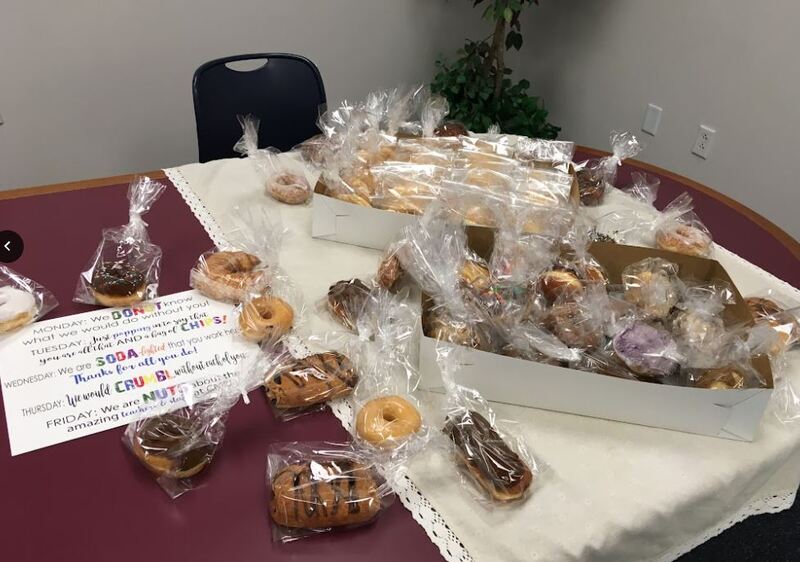 2021-10-05
2021-10-05PTA during Covid-19
I have been volunteering in the PTA for the last 13 years. Two of these years occurred when I was the PTA president at my daughter's middle school during the Covid-19 pandemic. Once the pandemic started and Utah moved all schools to online in March 2020, PTA had to adjust. We cancelled all of our meetings and delivered the end-of-year teacher gifts to the teachers’ and staff’s homes. The next school year (2020-2021), the students returned to school but had to wear masks and large group activities were cancelled. PTA held our monthly meetings outside or via Zoom (once it became too cold to hold them outside) and we cancelled our assemblies. The school district required PTA to individually wrap treats/food that we provided for the teachers. Rather than the potluck-style lunches that we had always provided, we needed to cater the lunches which tripled our costs. We went from a budget of $700 for teacher lunches/treats/gifts to $2200. We made significant cuts in other areas in order to make this adjustment. The pictures above show treats for the teachers from 2021 that are individually wrapped and a partial list of teacher addresses and driving times when the PTA delivered presents to the homes of teachers and staff in 2020 because they were working from home. It took about eight volunteers, each with a 1 1/2 to 2 hour route, to get everything delivered. -
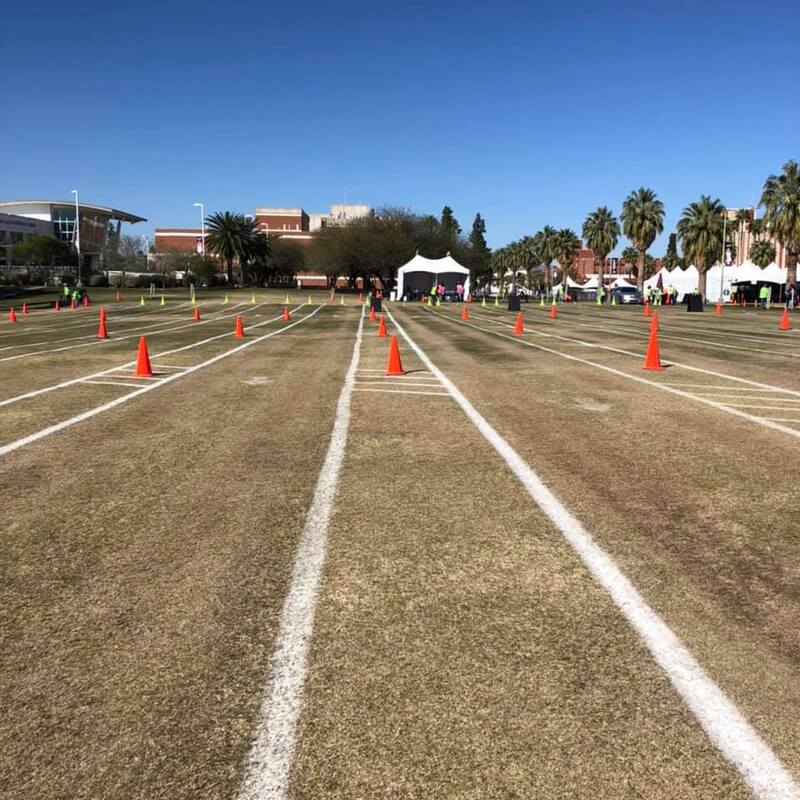 2021-02-25
2021-02-25Volunteering at the University of Arizona Vaccine POD
The University of Arizona ran a drive-thru and walk-up vaccine POD for six months in 2021. During that time they provided more than 240,000 doses of COVID-19 vaccine to the Southern Arizona community. I volunteered at the POD for 10 shifts between February 2021 and May 2021, helping with traffic control to get as many cars safely through the stations, with observation to ensure everyone was okay after receiving their vaccine, and with registration to help get information all ready for the nurses giving the vaccine. It was great to be a part of the solution and helping people protect themselves and other community members. One woman, while waiting to get her shot, told me how excited she was to be able to hug her grandchildren again. She started crying because she was so relieved to see her family and feel safe doing it. It was a great atmosphere at the University of Arizona and everyone was working together for each other. Something I will never forget and that I'm proud to have been a part of. The photo is from my first shift in the observation area on the Mall, waiting for the POD to open and line cars up for observation post-vaccine. -
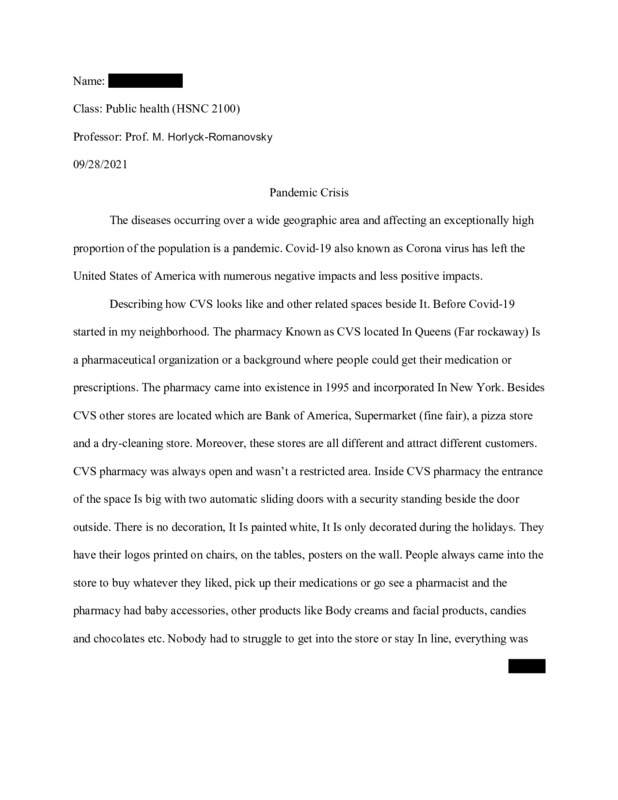 2020-04-24
2020-04-24My story is about the pandemic crisis when it started in 2020 I based it particularly on my area where I live.
The pandemic crisis about COVID-19 and how it affected everyone.
